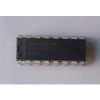MAX2265: Features: Low Average CDMA Current Consumption in Typical Urban Scenario55mA (MAX2264)90mA (MAX2265)40mA (MAX2266)0.5µA Shutdown Mode Eliminates External Supply Switch±0.8dB Gain Variation Ove...
floor Price/Ceiling Price
- Part Number:
- MAX2265
- Supply Ability:
- 5000
Price Break
- Qty
- 1~5000
- Unit Price
- Negotiable
- Processing time
- 15 Days
SeekIC Buyer Protection PLUS - newly updated for 2013!
- Escrow Protection.
- Guaranteed refunds.
- Secure payments.
- Learn more >>
Month Sales
268 Transactions
Payment Methods
All payment methods are secure and covered by SeekIC Buyer Protection PLUS.

 MAX2265 Data Sheet
MAX2265 Data Sheet







